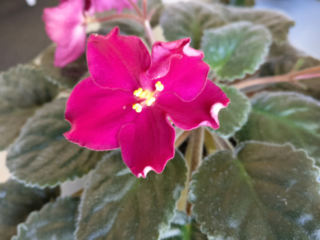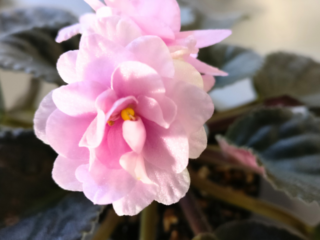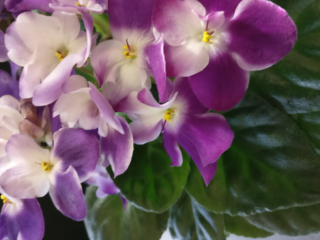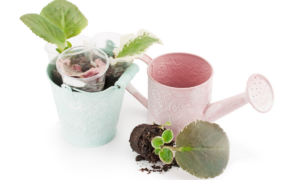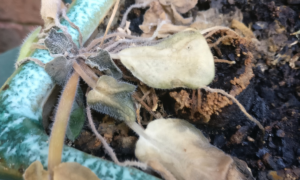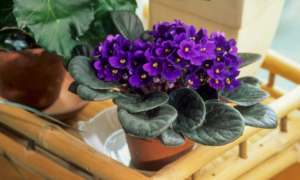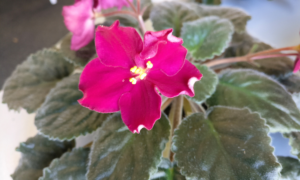They are one of the most beloved houseplants, but can African violets be divided? While it is possible to divide an African violet plant into smaller ones, there are certain steps that must be taken in order to ensure successful propagation. In this article we’ll answer the question “can african violets be divided?” and provide tips on how best to split them up as well as discuss some of the benefits associated with dividing your African Violet plant.
Table of Contents:
- Can African violets be divided?
- How to split an African violet plant
- Step by step how to separate African violet pups
- The benefits of dividing an African violet plant
- Tips for successfully dividing an African Violet
- FAQs in Relation to “Can African Violets Be Divided?”
- Conclusion
Can African violets be divided?
Yes, African violets are a popular houseplant that can be divided from the mother plant to create more plants. This process is relatively simple and requires only basic gardening tools and supplies.
The first step in dividing an African violet is to remove the plant from its pot. Gently loosen the soil around the root ball, taking care not to damage any of the roots or leaves. Once it’s free, carefully separate the root ball into two or more sections, making sure each section has at least one leaf attached. We’ll discuss further steps in the rest of the article.
With proper care after division, including regular fertilizing every month during the growing season, you should soon see healthy new growth appearing from both divisions within a couple of months’ time.
Yes, African violets can be successfully divided with careful attention to the roots and foliage.
Now let’s look at how to properly divide an African violet for optimal growth.
How to split an African violet plant: A step-by-step guide
Splitting an African violet plant is a great way to propagate and increase your collection of these beautiful plants. It’s not difficult, but there are some important steps you should follow for the best results.
Step 1: Identify the “pups” or baby plants that have grown from the mother plant.
These can be found at the base of the main stem and usually look like small versions of their parent plant. Once identified, carefully remove them from the potting mix with a sharp knife or scissors being careful not to damage any roots in the process.
Step 2: Use clean pruning shears to cut off any remaining leaves or stems attached to each pup
It’s important that each new baby plant has its own root system without any excess foliage attached. Make sure all cuts are made as close as possible to where they join with other parts of the plant; this will help ensure successful propagation later on when replanting them into new pots.
Step 3: Once all African violet pups have been separated from their parent plant, it’s time for repotting!
Each pup should be planted in its own pot filled with well-draining potting mix specifically designed for African violets (or similar). When planting each pup make sure that only one third of its stem is buried beneath the potting soil; this will allow enough room for new growth and prevent overcrowding within each pot once fully established again after transplantation shock passes over time.

Step 4: Water thoroughly until moisture begins dripping out through drainage holes located at bottom of each container
Then place in bright indirect light away from direct sunlight (which could cause leaf burn). Remember: slow and steady wins race here! If needed provide additional humidity by misting every few days until established again before returning to a normal watering schedule.
By following these simple steps, you can easily split an African Violet into multiple smaller plants to increase your collection.
.jpg)
The benefits of dividing an African violet plant
Dividing an African violet plant is a great way to help it grow faster and become bushier. By dividing the plant, you can create new plants from cuttings or share your existing plants with others. It also gives you a chance to save any unaffected leaves if one of the leaves has been affected by disease.
When deciding whether or not to divide your African violet, consider how large it is and how much space it takes up in its current pot. If the roots are growing out of the bottom of the pot, then it’s probably time for division. You’ll want to choose a healthy leaf that has at least three stems attached to it when making cuttings for propagation purposes.
The best time to divide an African violet is during spring or summer when there’s plenty of light available for growth and development. Before beginning, make sure all tools are sterilized so as not to spread diseases between plants; this includes pruning shears and scissors as well as pots and soil mixers used for repotting divided sections into separate containers after they have been separated from each other.
Division (which is different to propagating from leaf cuttings) is a great way to expand your African violet collection and enjoy more of its beautiful blooms. Next, let’s look at the steps for dividing an African violet plant.
Tips for successfully dividing an African Violet
- Division (which is different to propagating from leaf cuttings) is a great way to propagate African violets and increase your collection. It’s important to use the right tools when dividing an African violet plant mother plant, such as a sharp knife or scissors. Make sure you make clean cuts so that the new plants can take root properly.
- It’s also important to remove all of the leaves from each section before replanting them in soil mix. This will help ensure that they have enough energy for rooting and growing new foliage. After making your cuts, dip the cut ends into some rooting hormone powder before potting them in moistened African violet potting mix.
- Once potted, place your divided plants in indirect light and keep them evenly watered with lukewarm water until they become established in their new homes. You may want to consider using plastic pots for these newly divided plants since they retain moisture better than clay pots do, which helps reduce stress on young roots during this critical period of growth.
- If you notice any signs of wilting or discoloration on your newly divided African violets, it could be due to over-watering or too much direct sunlight exposure. Move them out of direct sun if necessary and adjust watering frequency accordingly until healthy growth resumes again. Additionally, avoid fertilizing newly divided African violets for at least four weeks after division as this can cause shock and stunt growth if done too soon after transplanting into fresh soil mix.
By following the steps outlined in this article, you can successfully divide your African Violet and enjoy its beauty for years to come.

FAQs in Relation to “Can African Violets Be Divided?”
When should I divide my African violets?
African violets should be divided when the plant has become overcrowded or when new growth is stunted. It’s best to divide them in spring or early summer, as this is the time of year when they are most actively growing. When dividing, make sure to use a sharp knife and carefully separate each crown from the main root system. Replant each division into its own pot with fresh soil and water thoroughly after planting. With proper care, your African violets will thrive for many years!
How do you divide and repot African violets?
Division and repotting of African violets is a simple process. First, gently remove the plant from its pot. Then, use a sharp knife to divide the root ball into two or more sections. Make sure each section has at least one healthy leaf and some roots attached. Finally, replant each division in separate pots filled with well-draining soil mix specifically designed for African violets. Water thoroughly after planting and place in bright indirect light for best results.
Do African violets like to be crowded?
No, African violets do not like to be crowded. They prefer to have some space between each plant so that they can get adequate light and air circulation. When planting multiple violets in the same pot or container, it is important to leave enough room for the plants to grow without crowding one another. Crowded African violets may become stunted and suffer from disease due to lack of air circulation and insufficient light exposure.
.jpg)
Should African violets be watered from the top or bottom?
African violets should be watered from the bottom. This is done by filling a tray with water and placing the pot in it so that the roots can absorb moisture from below. It’s important to avoid getting water on the leaves, as this can cause damage or disease. Watering from the top may also lead to root rot if there is too much standing water around them for an extended period of time. Bottom watering ensures that only enough moisture is absorbed for healthy growth and development of African violets.
Conclusion
With the right knowledge and care, you can successfully divide an African Violet plant into multiple smaller plants that will thrive in their new homes. Knowing how to split an African Violet plant and separating its pups is key for successful propagation. By following our tips on how to divide an African Violet, you can ensure that your newly divided plants are healthy and happy! So if you’re wondering “can african violets be divided?” the answer is yes – with the right steps taken!

